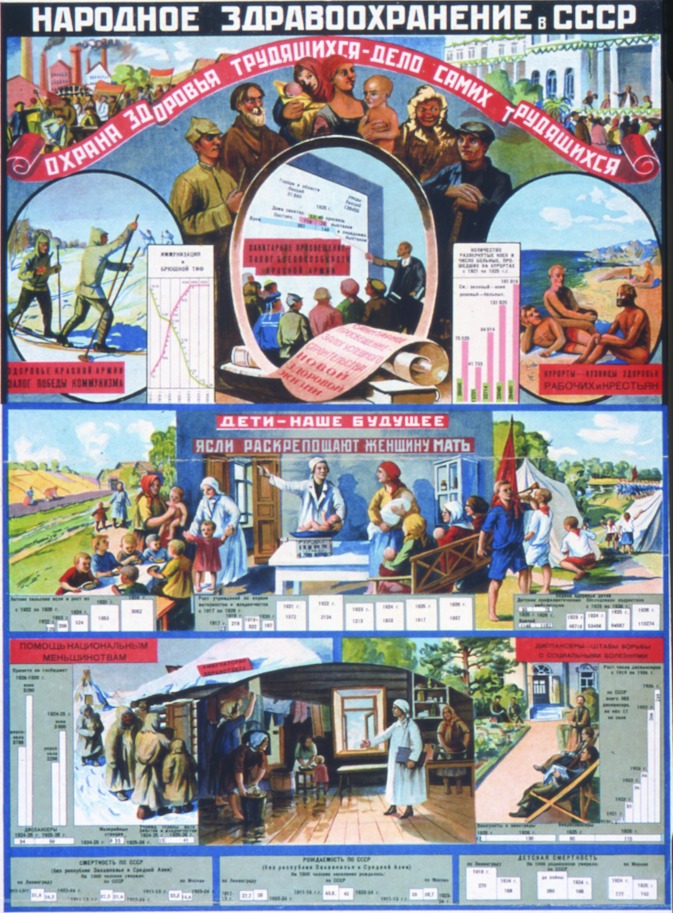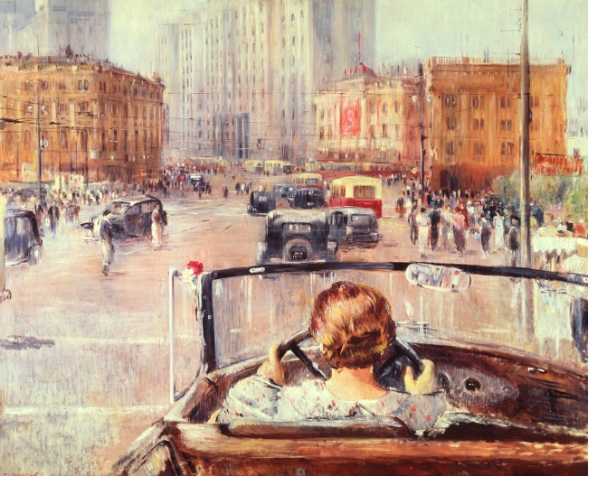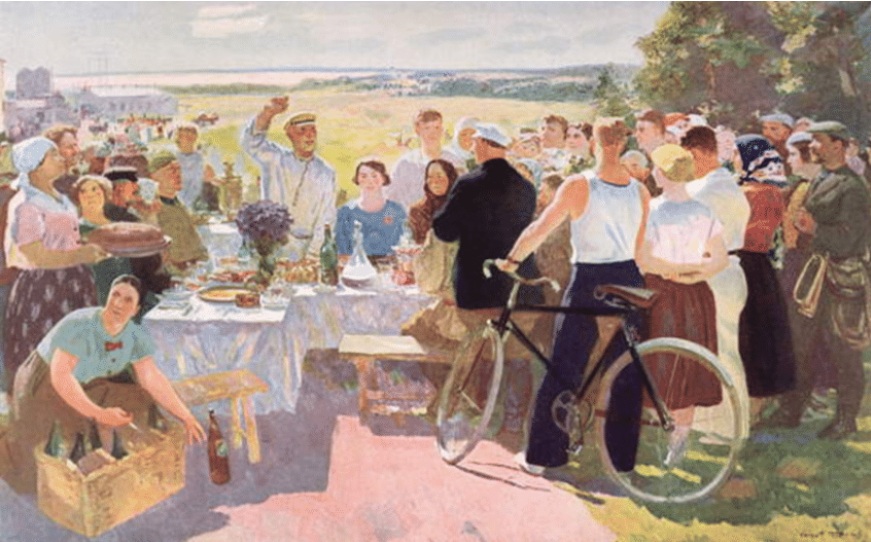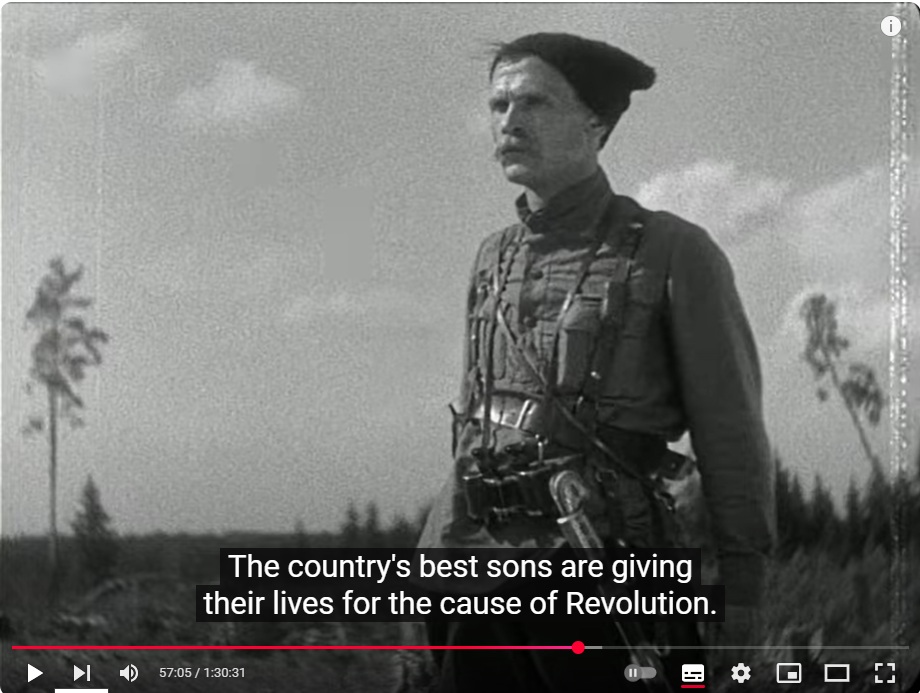|
|
|
Socialist Realism – more than just propaganda?The cultural movement that was ‘Socialist Realism’ arose out of Bolshevik propaganda, and Lenin's perception that, for Russia to become a communist country, the people of Russia would have to be educated into what it was to be a communist. When the Bolsheviks took control in 1917, therefore, they set up Narkompros – the People's Commissariat for Enlightenment – under Anatoly Lunacharsky. Lunacharsky believed that – by depicting the 'perfect person' ('New Soviet Man') – art could educate citizens on how to be perfect communists. A group called ‘The Association of Artists of Revolutionary Russia’ started publishing propaganda in 1922; it created a style which it called “heroic realism”. In 1933 the Russian writer Maxim Gorky developed this into what we call ‘socialist realism’: that culture it had to be about issues which concern the proletariat, and that it had to be supportive of the aims of the Party and the State. Steps were therefore taken to mobilise artists of all kinds to (sometimes literally) sing from the same songsheet. The USSR Union of Artists took over from AKhRR in 1932. In the same year a Union of Soviet Writers was set up to 'merge' authors’ creativity. Film was controlled by an organisation called Soyukino (‘Union Cinema’) etc. Therefore ‘socialist realism’ does not refer to a STYLE of art (in the way that, for example, ‘Impressionism’ or ‘Pop Art’ does) but to its INTENT. Having said that, some of it is fabulous and powerful, but it all carries a MESSAGE:
|
You saw this 1927 poster – 'People’s Health Care in the USSR' – by the Association of Artists of Revolutionary Russia – in the webpage on how the NEP affected people's iives. |
ArtSoviet artists sought to show Russia, not as it was ('warts and all'), but as it was going to be ... what it was in true communists' hearts. Was this 'just propaganda' in the venal sense of tricking people into support; or was it more like Christian artists showing saints as holy, or advertisers 'selling' features of their product they are proud of?
The 1934 triptych (below) by Yuri Pimenov, Workers of the Uralmash Plant, shows: (left panel) Theatre; (central panel) Workers at Uralmash; (right panel) Tea Time. (You might wish to compare it to the American WWII paintings of 'Rosie the Riveter' by J Howard Miller and Norman Rockwell.) According to the Soviet Art website, Pimenov's art moved over time from dramatic incidents to 'beautiful moments'. Although he was a leading artist of the 1930s, in 1966 he was one of 25 people to protest against the rehabilitation of Stalin by the government. |
New Moscow, a 1937 painting by Yuri Pimenov. The Russia Beyond website calls it "quintessential socialist realism". Notice who is driving!
|
|
|
|
|
This 1937 painting of a 'Harvest Celebration at a Collective Farm' is by Sergey Guerassimov. There is a similar painting conveying the same messages on the webpage on Collectivisation, Source B.
|
Consider:1. What messages was Pimenov conveying about Russian women workers at the Uralmash Plant? 2. During WWII, in America, women workers were also celebrated. Who did it better – Pimenov or Miller/Rockwell? 3. What messages was Guerassimov conveying about collectivisation? How closely does his depiction match to what was actually happening? 4. What messages was Pimenov conveying about Stalin's Russia in his 1937 painting New Moscow?
|
SculptureThis 1937 sculpture, Worker and Kolkhoz Woman in stainless steel, is by Vera Mukhina. It was created for the Soviet pavilion at the 1937 Paris World Fair, which was directly opposite the German pavilion. It currently stands in the centre of Moscow. It is the logo of the film studio Mosfilm, and a reproduction featured in the opening ceremony of the 2014 Winter Olympics when they were held in Russia. Mukhina was nicknamed 'the queen of Soviet sculpture'.
|
Consider:1. What messages was Mukhina conveying about Kolkhoz workers in this 1937 sculpture? Again, how near to reality was her 'Socialist Realism'? 2. Look at what they are holding in their hands, and the symbol that together they have formed. What message is that conveying to the world? And why was it important (given its initial location)?
|
FilmFilm was another medium that the government believed could exercise a great infuence on people's lives. A famous Socialist rRealist fim was Chapaev (1934), a Civil War drama based on the life of a real Red Army hero, Vasily Chapayev. In its first year it was watched by 30 million people in the USSR, and President Putin declared it his favourite film of all time. Again, the Social Realism displays itself in the storyline and attitudes, rather than any particular style of film-making. The film is available on YouTube: to get a flavour, watch from 54:00 to 1:04.
|
|
LiteratureWriting was perhaps the most-controlled of all the arts, so authors had no opportunity not to be Socialist Realists. Two typical/famous Socialist Realist books of the time were: 1. The Road to Calvary by Aleksey Tolstoy, is a three-part epic about two sisters’ lives over the period 1914-21. Each falls in love – Ekaterina with an army officer, her sister Daria with an engineer. Through the First World War, the Revolutions and the Civil War they are sometimes thrown together, sometimes pulled apart, but it all ends happily in 1921, when they meet in the presence of Lenin and Stalin to celebrate the 'GOELRO' plan to electrify the USSR. 2. A semi-autogiographical novel based on his own life, Nikolai Ostrovsky’s How The Steel Was Tempered / the Making of a Hero (1932-36) follows the story of ‘Pavel Korchagin’, and how Bolshevism and the Civil War (in which he lost an eye) forged him as a true 'Soviet Man'. The first copies described the rejection his disability caused, and the difficulties in his marriage, but these were edited out of the book, when it was published in 1936.
|
|
MusicMusic, the Bolsheviks knew well, is another art-form with the ability to change lives. One popular Socialist Realist song of the 1930s was Wide is my Motherland (1936 - lyrics), with words composed by Vasily Lebedev-Kumach. Lebedev-Kumach was fiercely Bolshevik – the nickname 'Kumach' comes from a kind of red cloth which he wore – and he was well-liked on account of his outspoken views. He wrote numerous songs, including Hymn of the Bolshevik Party, A Simple Soviet Man and (during WWII) The Sacred War. Half a century before Freddie Mercury mobilised Live Aid, the Soviets realised the power of communal singing, and the 'mass-song' with political themes to be sung at rallies was a feature of Soviet Realism. One such song was March of the Enthusiasts (1940 - lyrics).
|
Consider:Using all the information on this webapge, plan an extended answer to the question: 'How was 'Socialist Realism' important for Stalin's dictatorship?'.
|
|
| |





